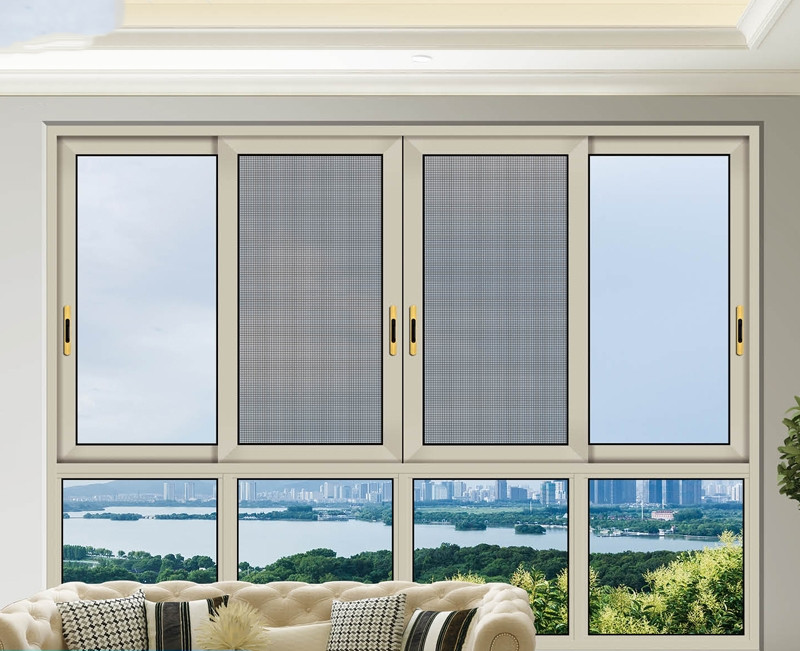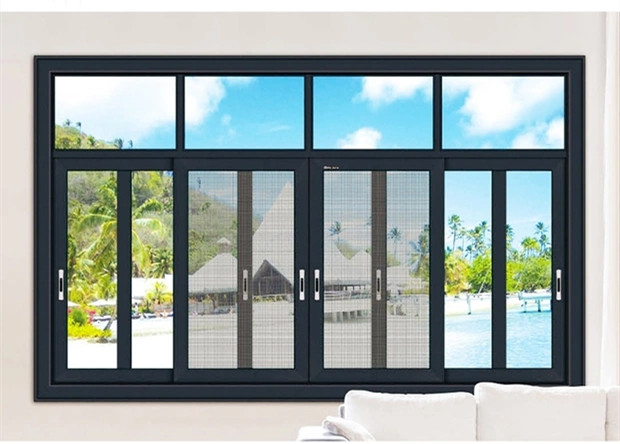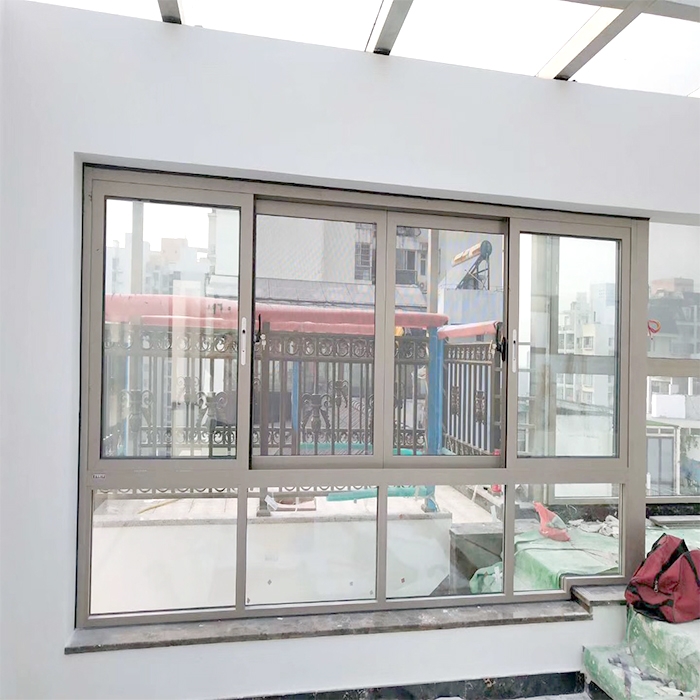Customizing hardware for aluminum sliding windows involves selecting components that match the specific needs of the project, including functionality, aesthetics, security, and durability. Here are key steps to customize hardware for aluminum sliding windows:
1. Determine Window Size and Weight
- Window Dimensions: The size and weight of the aluminum sliding window will influence the type of hardware needed. Larger, heavier windows require more robust hardware such as reinforced tracks and heavier-duty rollers.
- Glass Thickness: The thickness of the glass will affect the choice of hardware components, particularly the rollers and track systems, as heavier glass requires stronger support.

2. Choose Track and Roller System
- Tracks: Sliding windows rely on a bottom and top track system. You can choose between surface-mounted or recessed tracks, depending on the desired appearance and space.
- Standard Tracks: These are generally made from durable, corrosion-resistant materials like stainless steel or anodized aluminum.
- Recessed Tracks: For a more streamlined look, recessed tracks can be embedded into the wall or frame, providing a cleaner aesthetic.
- Rollers: Select high-quality rollers based on the window weight. Stainless steel or nylon rollers are popular choices. Nylon rollers are quieter, while steel rollers are more durable and suitable for larger windows.
- Single or Dual Rollers: Dual roller systems are ideal for larger or heavier windows, offering smoother movement.

3. Locking Mechanisms
- Security Locks: Choose secure locking systems to ensure the safety of the window. Options include:
- Cam Locks: A popular choice for sliding windows, providing a secure locking mechanism.
- Pin Locks: Can be used in conjunction with other locks for added security.
- Multi-Point Locks: These are ideal for larger windows and provide higher security by locking at multiple points along the window frame.
- Keyed Locks: If extra security is needed, keyed locks are ideal for preventing unauthorized opening.

4. Weather Stripping and Seals
- Sealing Options: To ensure proper insulation, weather stripping is crucial. Choose weatherstrips that fit the specific design of the sliding window.
- EPDM Rubber Seals: Commonly used for superior insulation and weather resistance.
- Vinyl Seals: Often used for their flexibility and durability.
- Gasket Materials: High-quality gasket materials can help prevent drafts, noise, and water infiltration.

5. Handle Selection
- Ergonomic Handles: Choose handles that are comfortable and easy to operate, especially for larger windows.
- Pull Handles: Simple and practical, especially for large sliding windows.
- Lever Handles: Provide better grip and more secure operation.
- Finish and Material: Handles can be customized in various finishes, such as polished chrome, satin nickel, or matte black, to match the design and aesthetic of the window.

6. Sliding Window Finish Options
- Anodized Aluminum: Offers better durability and corrosion resistance, making it suitable for both interior and exterior use.
- Powder Coating: Custom powder coating options allow you to match the window hardware to the decor, with colors ranging from neutral tones to vibrant shades.
- Stainless Steel Components: Stainless steel hardware not only enhances the aesthetic but also adds strength and resistance to corrosion.

7. Hardware Color and Finish
- Matching with Frame Finish: The hardware should match the color of the window frame, whether it’s anodized, powder-coated, or wood-look finish.
- Aesthetic Preference: Consider whether the window hardware should blend in or stand out as a design feature. For a minimalist look, matte or satin finishes are ideal, while polished or brushed finishes can add a touch of sophistication.

8. Durability and Maintenance
- Corrosion Resistance: Aluminum and stainless steel are commonly chosen for their resistance to rust and wear.
- Lubrication: Regular lubrication of moving parts like rollers and tracks will ensure smooth operation over time.

9. Consider Additional Features
- Noise Reduction: For locations where noise reduction is important, consider adding specialized hardware with noise-dampening features, like soft-close mechanisms.
- Child Safety Locks: If the window will be used in homes with children, incorporate childproof locks for safety.

10. Test and Adjust
- Once the hardware is installed, test the functionality of the sliding window to ensure smooth operation, secure locking, and proper sealing. Adjustments may be necessary for optimal performance, such as adjusting roller tension or repositioning seals.

By selecting the right combination of hardware components based on the specific requirements of your aluminum sliding windows, you can ensure a functional, secure, and aesthetically pleasing product.
